Reinventing Parks (1988–Present)
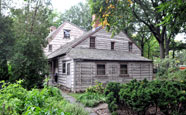
1989
Historic House Trust of New York City, a not-for-profit organization, is created to preserve and promote the then-16 historic house museums located in New York City parks. The City Parks Foundation (CPF), a non-profit organization that raises private funds to support programs and renovations in the city's parks and playgrounds, is formed. In partnership with Parks, CPF sponsors Central Park's SummerStage concert series, the Learn-To-Swim programs that serve thousands of children at Parks pools and recreation centers, the installation of state-of-the-art play equipment, and Mobile Recreation Vans that transport equipment to playgrounds during the summer.
1993
The African-American Burial Ground, encompassing parts of City Hall Park and Foley Square, is designated an official City landmark.
1994
Greenstreets, a joint project with the Department of Transportation that had originally begun in 1986, is relaunched. The program converts paved street properties, like triangles and malls, into green spaces. By 2001, 2001 Greenstreets will have been created.
1995
Partnerships for Parks (PFP) is formed by Parks and CPF to increase community support for parks. Partnerships creates and strengthens groups that care for local parks, links them so that they can learn from each other and be stronger collectively, and promotes the parks generally so that people will be more likely to get involved in them.
1997
In September, the Tisch Children's Zoo reopens after a $6 million renovation.
In October, Parks and the Central Park Conservancy completes a two-year, $18.2 million project to fully restore the 55-acre Great Lawn of Central Park—one of the most ambitious reconstruction projects in the history of the park.
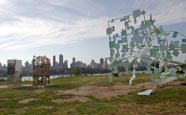
1998
Seventeen new parcels of parkland are acquired and two park additions, totaling 237.10 new acres. Notable acquisitions include Brooklyn's Paerdegat Basin Park (160.74 acres), Socrates Sculpture Park in Queens (1.553 acres), and Staten Island Industrial Park Wetlands Addition (70.29). Parks' Natural Resource Group completes the restoration of nearly 200 acres of natural areas.
1999
Restoration of the Bronx River begins, creating momentum among government, private agencies, and the Bronx communities that border the River.
2003
150 acres in Governor’s Island, which had been under the auspices of the US Coast Guard and inaccessible to the public, is transferred to New York State for $1, to be turned into a seasonal public park. The island’s remaining 22 acres are given to the National Park Service. In summer and early autumn, free ferries shepherd members of the public to the island, which hosts popular concerts and events and offers recreational space.
Parks launches a pilot program for “Shape Up NYC,” which offers free educational fitness programs in neighborhoods across the city. The new recreational offerings include popular exercise routines such as Zumba and yoga.
2004
Chelsea Recreation Center opens, the first new New York City recreation center to be built in more than 30 years.
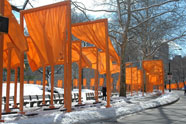
2005
Icahn Stadium, a 5,000 seat Olympic-size track and field arena, opens on Randall’s Island on April 23.
NYC Parks acquires Fort Totten Park, a pristine 60 acre park that encompasses a preserved Civil War fortress, which had formerly been the property of the United States Army.
The Gates, an art installation by Christo and Jeanne-Claude in Central Park, attracts 4 million visitors while on display from February 12 – 27.
2007
Through Mayor Bloomberg’s comprehensive PlaNYC program, two long-term Parks initiatives are launched: MillionTreesNYC, a plan to grow NYC's urban forest by planting and caring for one million new street trees throughout the city over ten years, and Schoolyards to Playgrounds, under which hundreds of schoolyards have been refurbished and opened to the public as playgrounds during the hours when the schools are not in operation.
2008
Construction begins on Freshkills Park, formerly home to the nation's largest landfill. At 2,200 acres, this Staten Island park will be three times the size of Central Park, making it the biggest park built in New York City in more than a century.
The Flushing Meadows Corona Park Pool & Rink opens, with an Olympic-sized indoor pool and an NHL regulation-sized skating rink, making it the largest recreation complex in any of NYC’s parks.
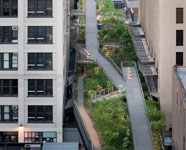
2009
The first section of the High Line, a former elevated freight rail transit line, opens to the public on June 9. Millions of visitors flock to the once-abandoned railway, now fully rehabilitated with native plants and a sustainable design.
New stadiums are opened for both of NYC’s major league baseball teams -- a new Yankee Stadium is opened on the former Macombs Dam Park in the Bronx, and Citi Field opens to house the Mets in Queens’ Flushing Meadows Corona Park.
2010
The first section of Brooklyn Bridge Park, Pier 1, opens to the public. The park stretches along Brooklyn's waterfront under the majestic Brooklyn Bridge, making the post-industrial area available to the public in a new, beautiful form, with playgrounds, volleyball courts, a waterfront promenade, and the classic Jane's Carousel, which was first built in 1922 for an amusement park in Youngstown, Ohio.
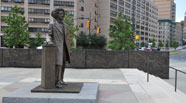
2011
The Frederick Douglass Memorial is unveiled in Harlem. The memorial in the northwest corner of Central Park consists of an eight-foot bronze portrait sculpture by Gabriel Koren and a large circle and fountain designed by Algernon Miller
2012
The outdoor pool at McCarren Park, which had been closed in 1984, is reopened to the public. The following year an ice skating rink is opened at the same site for use during the winter months.